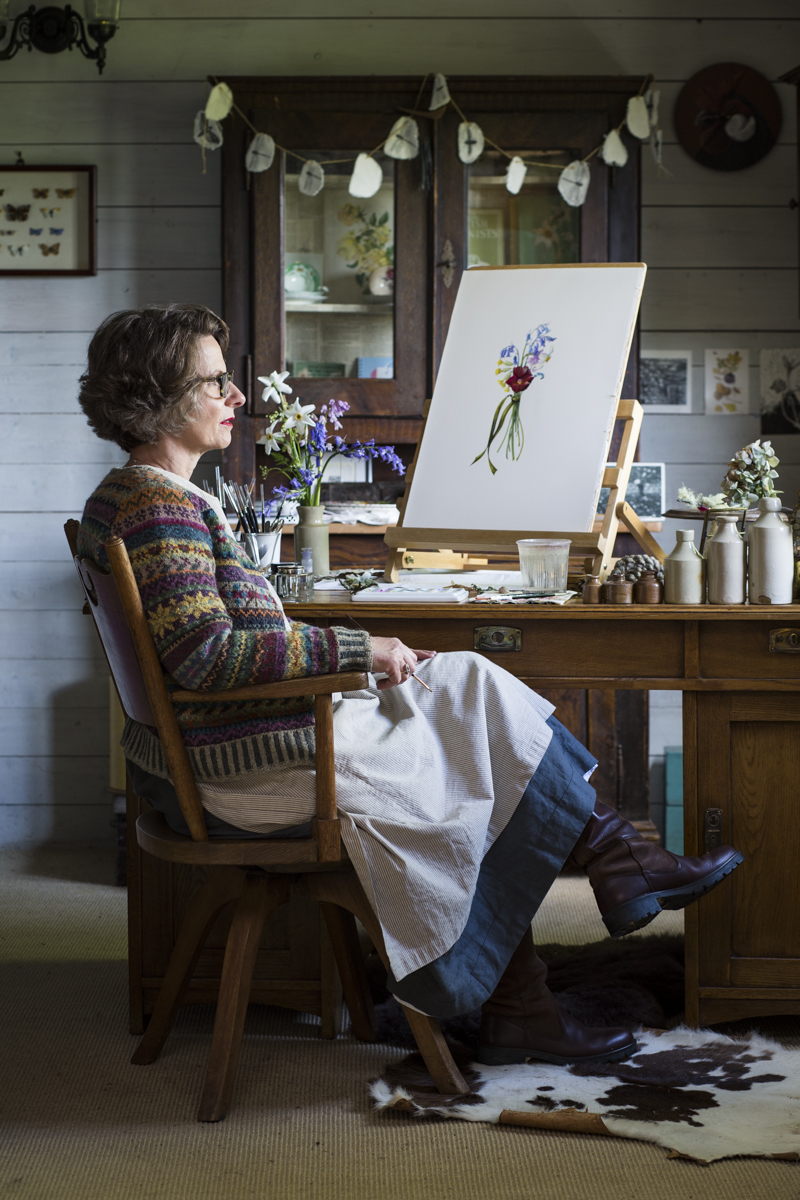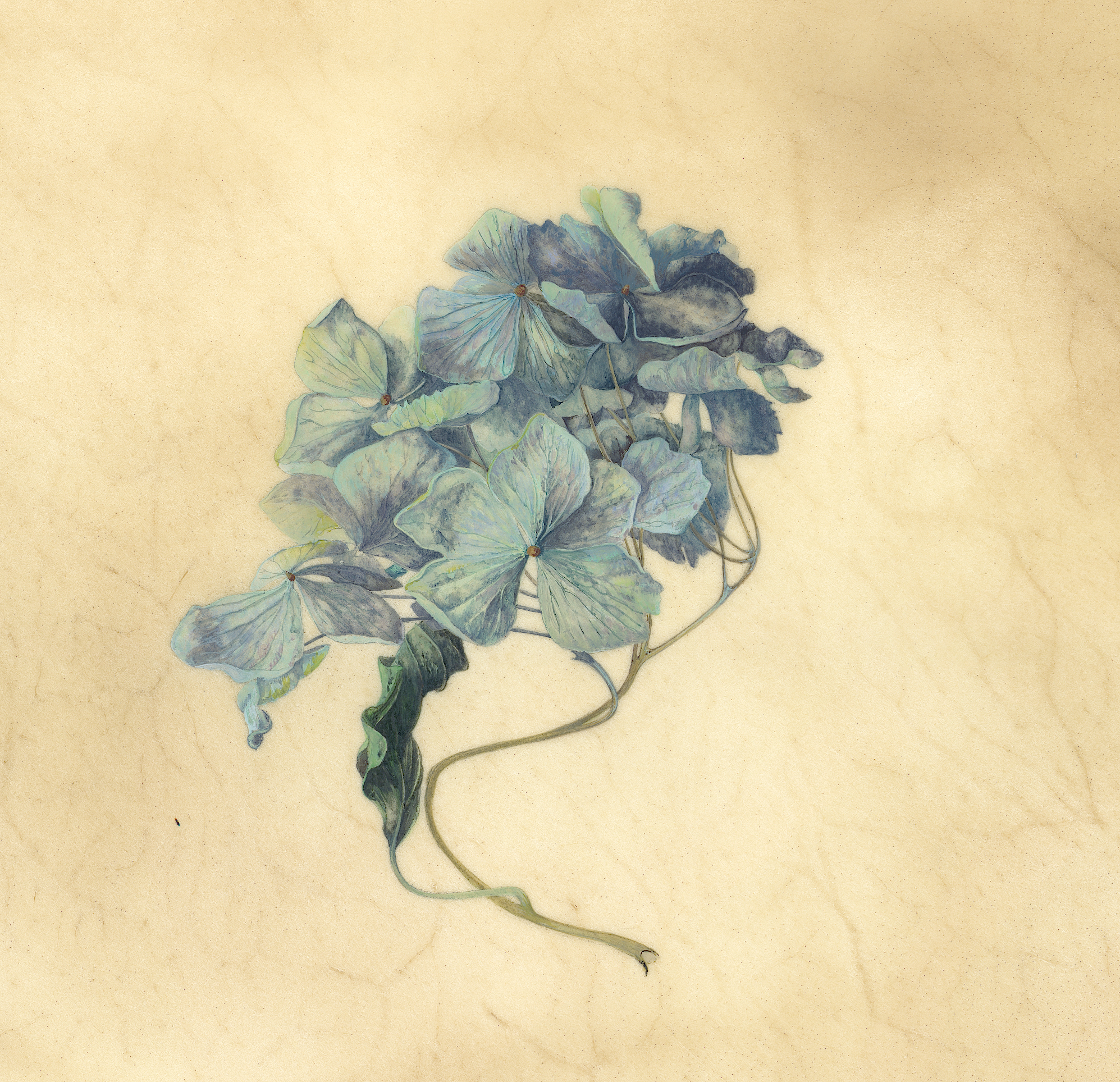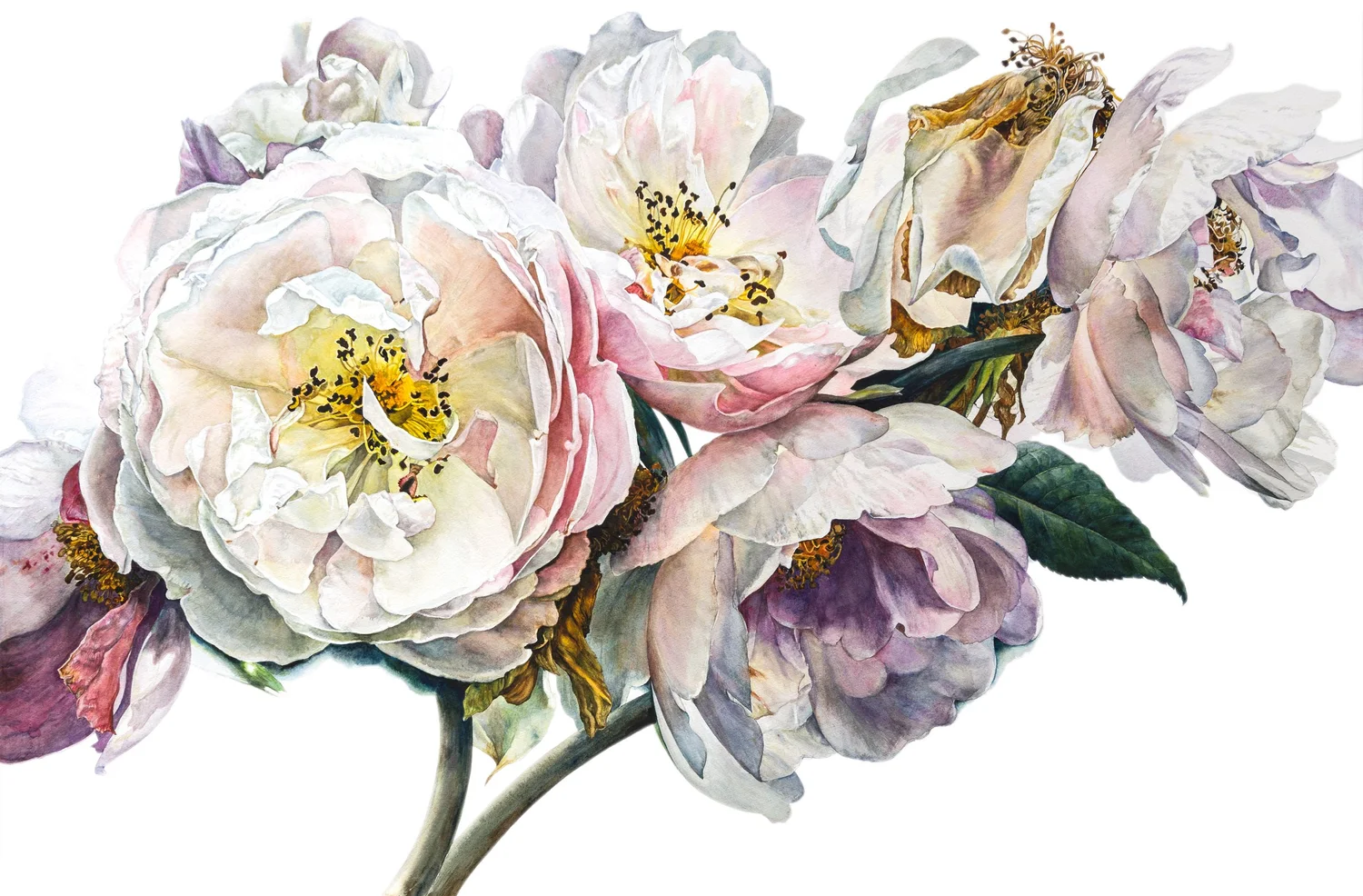What does a typical day in the life of an artist look like for you?
A typical day for me as an artist involves making sure that the dogs are comfortable in my studio and that I have an interesting audiobook on the go. I’m a particular fan of true crime or any police procedural crime novel or a factual book. This seems to help me to get into the zone.
Having painted for many years and now being in late middle age, my neck is rather creaky and so I try not to sit for any longer than an hour and a half. Because I quite often paint smaller subjects on quite small pieces of vellum it is important that I can be really close to the vellum, often working with very small brushes.
For this standing and moving around to look at the work from a distance is really important to retain that critical edge. I may paint into the evening – but my eyesight and neck mean that I need to be careful. I really like to ‘surprise’ my work first thing the next day to see how I feel it is going.
Do you have any favourite gardens to visit or places to immerse yourself in nature?
One of my favourite formal gardens is Lytes Cary garden in Somerset. It’s the garden of a very small Manor house and it has elements of proper organised garden with some beautiful stone walls as well as some cottage garden favourites.
However, my favourite places of all would be green lanes and trackways and ancient routes, and to be able to wander around the English countryside and particularly to see wildflowers growing in their natural habitats. There is nothing more special than finding an orchid in the verge or somewhere at the edge of a field and trying to identify it.







